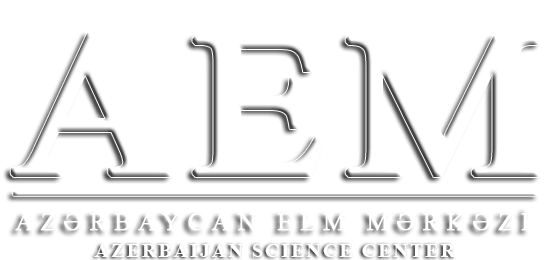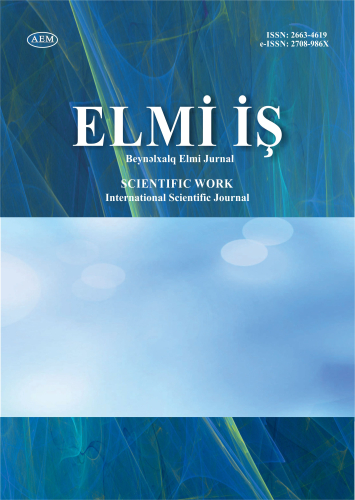DOI: https://doi.org/10.36719/2663-4619/94/79-84
Aygun Sardarova
Azerbaijan State Agrarian University
PhD in Biology
aygun.sardarova@mail.ru
Naila Mammadova
Azerbaijan State Agrarian University
mammadova.naila.1965@gmail.com
Jeyla Rustamova
Azerbaijan State Agrarian University
PHYSIOLOGICAL CHARACTERISTICS OF PLANTS CULTIVATED IN
HYDROPONIC CONDITIONS AND CULTIVATION TECHNOLOGY
Abstract
The article describes the physiological properties of plants grown in hydroponics and the effect of this method on their productivity. Currently, growing plants using the hydroponic method is a very important issue..Hydroponics are not limited to indoor farming. As mentioned previously, it is usually better to grow in more soil than it is to build hydroponics. But if soil is limited, and temperature permits - namely in a desert - then hydroponics can be viable as a farming tool. When grown hydroponically, the plant is fed by roots in moist air, highly aerated water, or a solid but porous, moist and air-entrained medium, rather than in soil, which promotes root respiration and requires relatively little nutrition. frequent (or constant drip) watering of workers. A solution of mineral salts prepared according to the needs of this plant. As a substitute, gravel, gravel, as well as some porous materials - expanded clay, vermiculite, etc. can be used. n static solution culture, plants are grown in containers of nutrient solution, such as glass Mason jars (typically, in-home applications), pots, buckets, tubs, or tanks. The solution is usually gently aerated but may be un-aerated.. If un-aerated, the solution level is kept low enough that enough roots are above the solution so they get adequate oxygen. A hole is cut (or drilled) in the top of the reservoir for each plant; if it is a jar or tub, it may be its lid, but otherwise, cardboard, foil, paper, wood or metal may be put on top. A single reservoir can be dedicated to a single plant, or to various plants. Reservoir size can be increased as plant size increases. A home-made system can be constructed from food containers or glass canning jars with aeration provided by an aquarium pump, aquarium airline tubing, aquarium valves or even a biofilm of green algae on the glass, through photosynthesis. Clear containers can also be covered with aluminium foil, butcher paper, black plastic, or other material to eliminate the effects of negative phototropism. The nutrient solution is changed either on a schedule, such as once per week, or when the concentration drops below a certain level as determined with an electrical conductivity meter. Whenever the solution is depleted below a certain level, either water or fresh nutrient solution is added. A Mariotte's bottle, or a float valve, can be used to automatically maintain the solution level. In raft solution culture, plants are placed in a sheet of buoyant plastic that is floated on the surface of the nutrient solution. That way, the solution level never drops below the roots The nutrient solution is changed either on a schedule, such as once per week, or when the concentration drops below a certain level as determined with an electrical conductivity meter. Whenever the solution is depleted below a certain level, either water or fresh nutrient solution is added. A Mariotte's bottle, or a float valve, can be used to automatically maintain the solution level. In raft solution culture, plants are placed in a sheet of buoyant plastic that is floated on the surface of the nutrient solution. That way, the solution level never drops below the roots.
Keywords: hydroponics, nutrient medium, plant physiology, cultivation, technology, aeroponika sistemi, drain, hydroponics system
Aygün Sərdarova
Azərbaycan Dövlət Aqrar Universiteti
biologiya üzrə fəlsəfə doktoru
aygun.sardarova@mail.ru
Nailə Məmmədova
Azərbaycan Dövlət Aqrar Universiteti
mammadova.naila.1965@gmail.com
Ceyla Rüstəmova
Azərbaycan Dövlət Aqrar Universiteti
ceyla.rustemova.1990@mail.ru
Hidroponika şəraitində becərilən bitkilərin fizioloji xüsusiyyətləri və
becərilmə texnologiyası
Xülasə
Məqalədə hidroponika şəraitində yetişdirilən bitkilərin fizioloji xassələri və onların məhsuldarlığına bu üsulun təsiri haqqında verilmişdir. Hal-hazırda hidroponika üsulu ilə bitki becərilməsi çox aktual məsələdir. Hidroponik üsulla yetişdirildikdə bitki köklərlə torpaqda deyil, nəmli havada, yüksək aerasiyalı suda və ya bərk, lakin məsaməli, nəm və hava tutumlu mühitdə qidalanır ki, bu da köklərin tənəffüsünü təşviq edir və nisbətən qidalanma tələb edir. işçilərin tez-tez (və ya daim damcı) suvarması. Bu bitkinin tələbatına uyğun hazırlanmış mineral duzların məhlulu. Əvəzedici kimi çınqıl, çınqıl, həmçinin bəzi məsaməli materiallar - genişlənmiş gil, vermikulit və s. istifadə edilə bilər. Statik məhlul tətbiqi ilə bitkilər şüşə Mason (adətən, evdə tətbiqlər), qablar, vedrələr, çəlləklər və ya çənlər kimi qida məhlulu olan qablarda yetişdirilir. Məhlul adətən yumşaq şəkildə havalandırılır. Əgər havalandırılmırsa, məhlulun səviyyəsi kifayət qədər aşağı səviyyədə saxlanılır ki, lazımi qədər köklər məhlulun üstündə olsun ki, onlar adekvat oksigen əldə etsinlər. Hər bir bitki üçün anbarın yuxarı hissəsində bir çuxur kəsilir (və ya qazılır); banka və ya çəlləkdirsə, onun qapağı ola bilər, əks halda üstünə karton, folqa, kağız, taxta və ya metal qoyula bilər. Tək bir su anbarı tək bir bitkiyə və ya müxtəlif bitkilər üçün istifadə edilə bilər. Bitki ölçüsü artdıqca qabların ölçüsü artırıla bilər. Evdə hazırlanmış sistem, fotosintez vasitəsilə akvarium nasosu, akvarium hava borusu, akvarium klapanları və ya hətta şüşə üzərində yaşıl yosunların biofilmi ilə təmin edilən aerasiya ilə qida qablarından və ya şüşə konserv bankalarından hazırlana bilər. Mənfi fototropizmin təsirini aradan qaldırmaq üçün şəffaf qablar da alüminium folqa, qara plastik və ya digər materiallarla örtülə bilər. Qida məhlulu həftədə bir dəfə və ya konsentrasiya elektrik keçiriciliyi ölçən cihazla müəyyən edilən müəyyən səviyyədən aşağı düşdükdə dəyişdirilir. Məhlul müəyyən səviyyədən aşağı düşdükdə ya su, ya da təzə qida məhlulu əlavə edilir. Şüşə və ya float valve, məhlul səviyyəsini avtomatik saxlamaq üçün istifadə edilə bilər. Bitkilər qida məhlulunun səthində üzən üzən plastik təbəqəyə yerləşdirilir. Beləliklə, onun səviyyəsi heç vaxt köklərin altına düşmür.
Açar sözlər: hidroponika, qida mühüti, bitki fiziologiyası, becərilmə, texnologiya, aeroponika sistemi, drenaj, hidroponika sistemi

